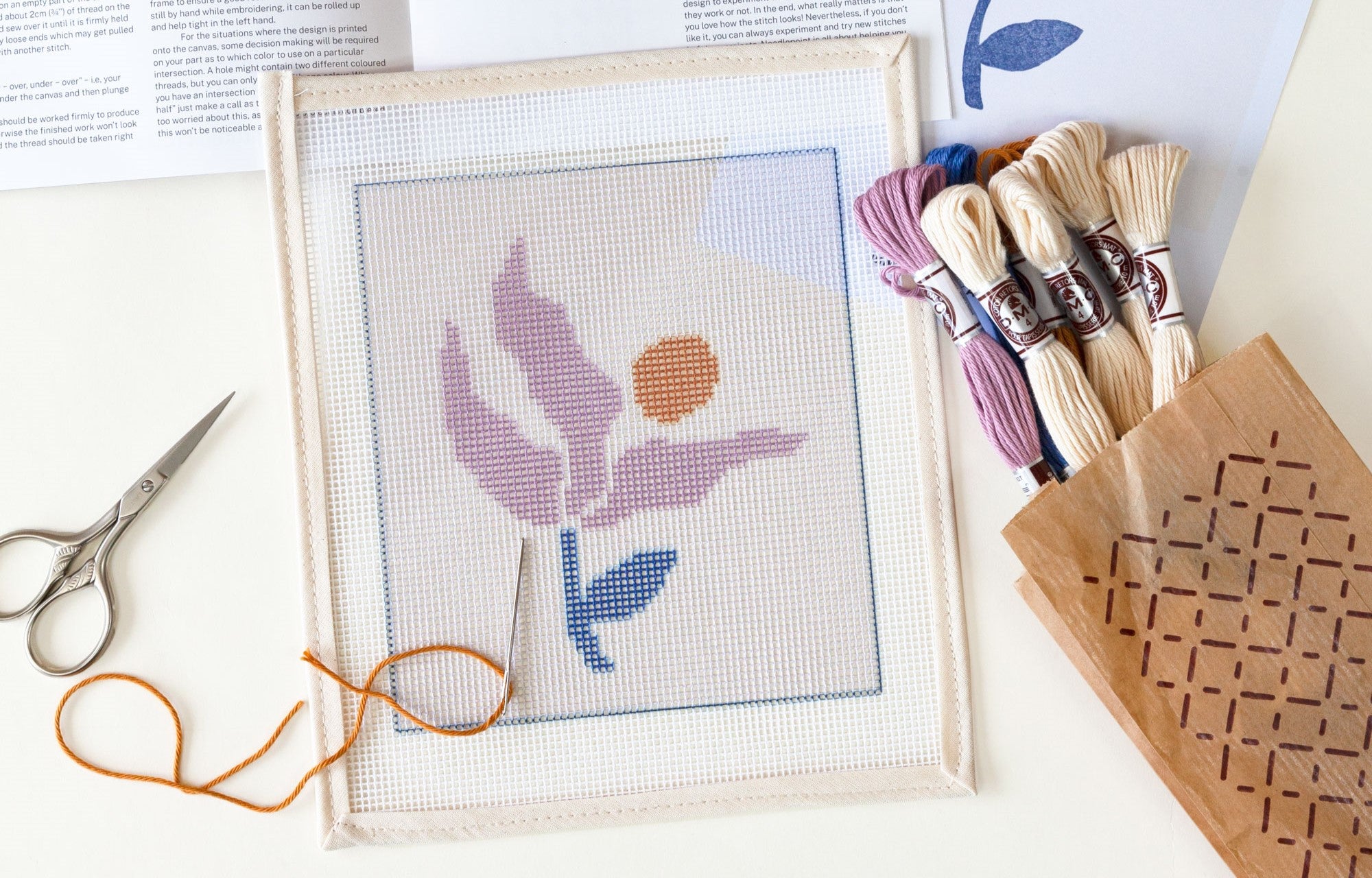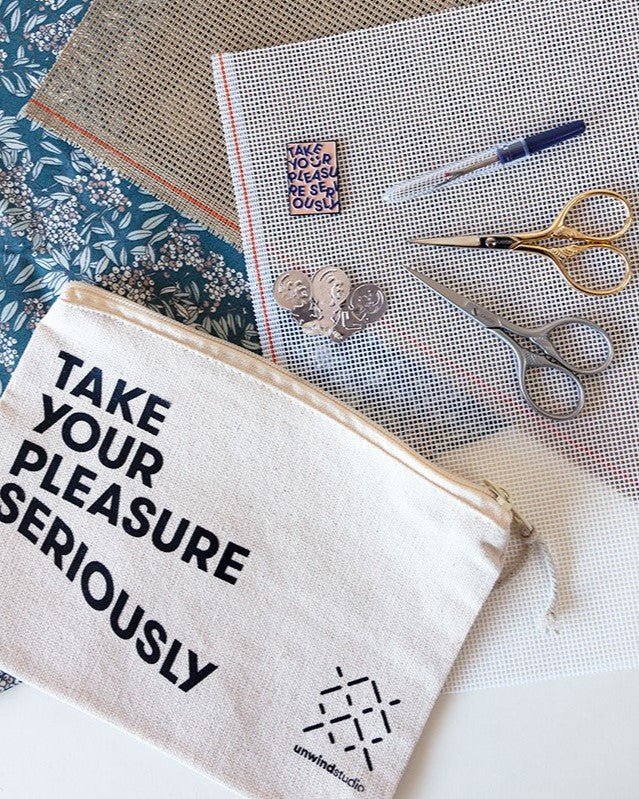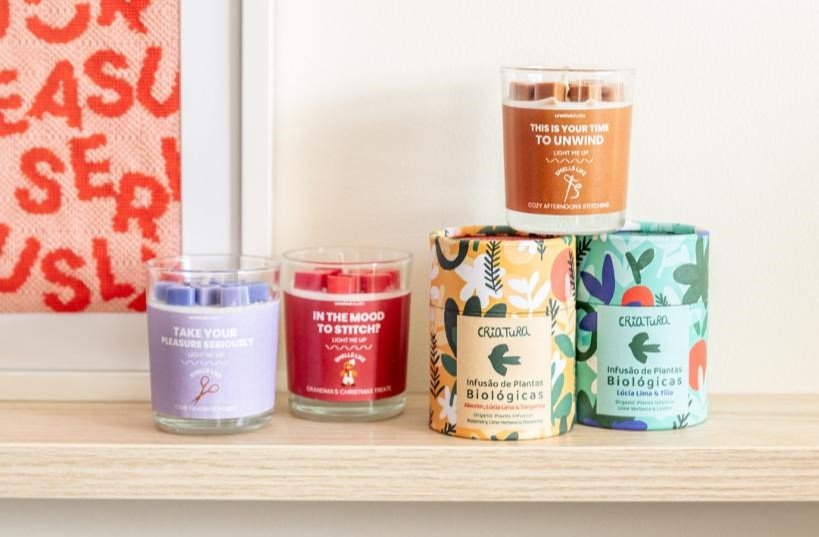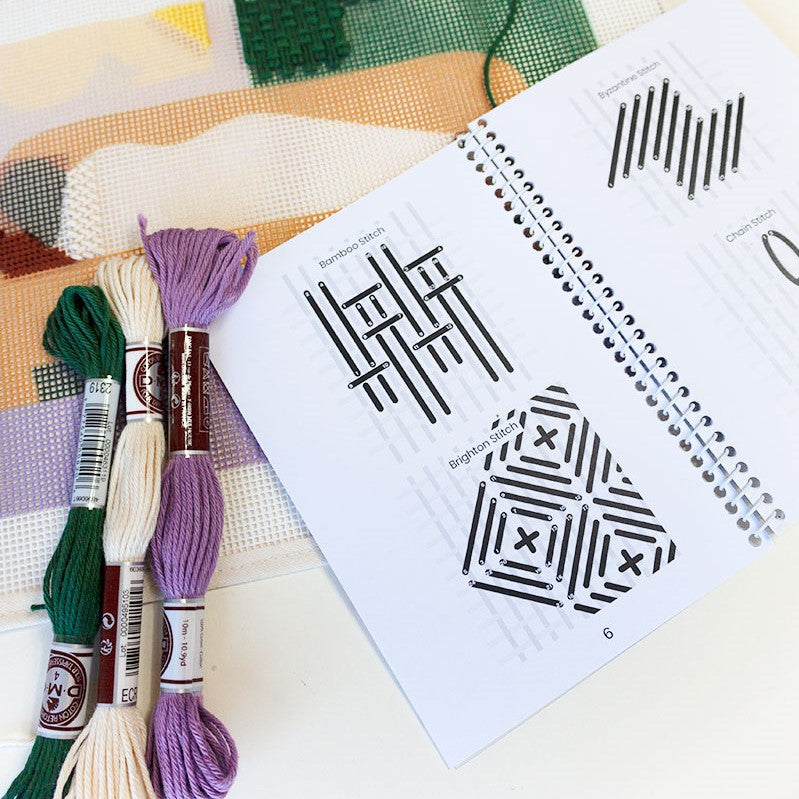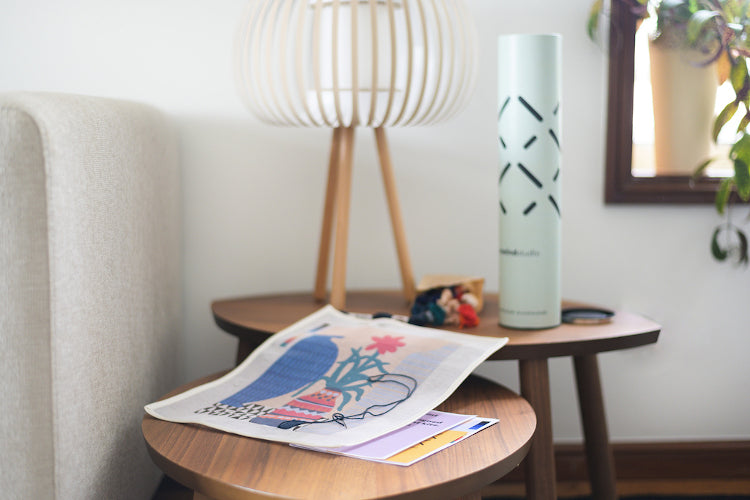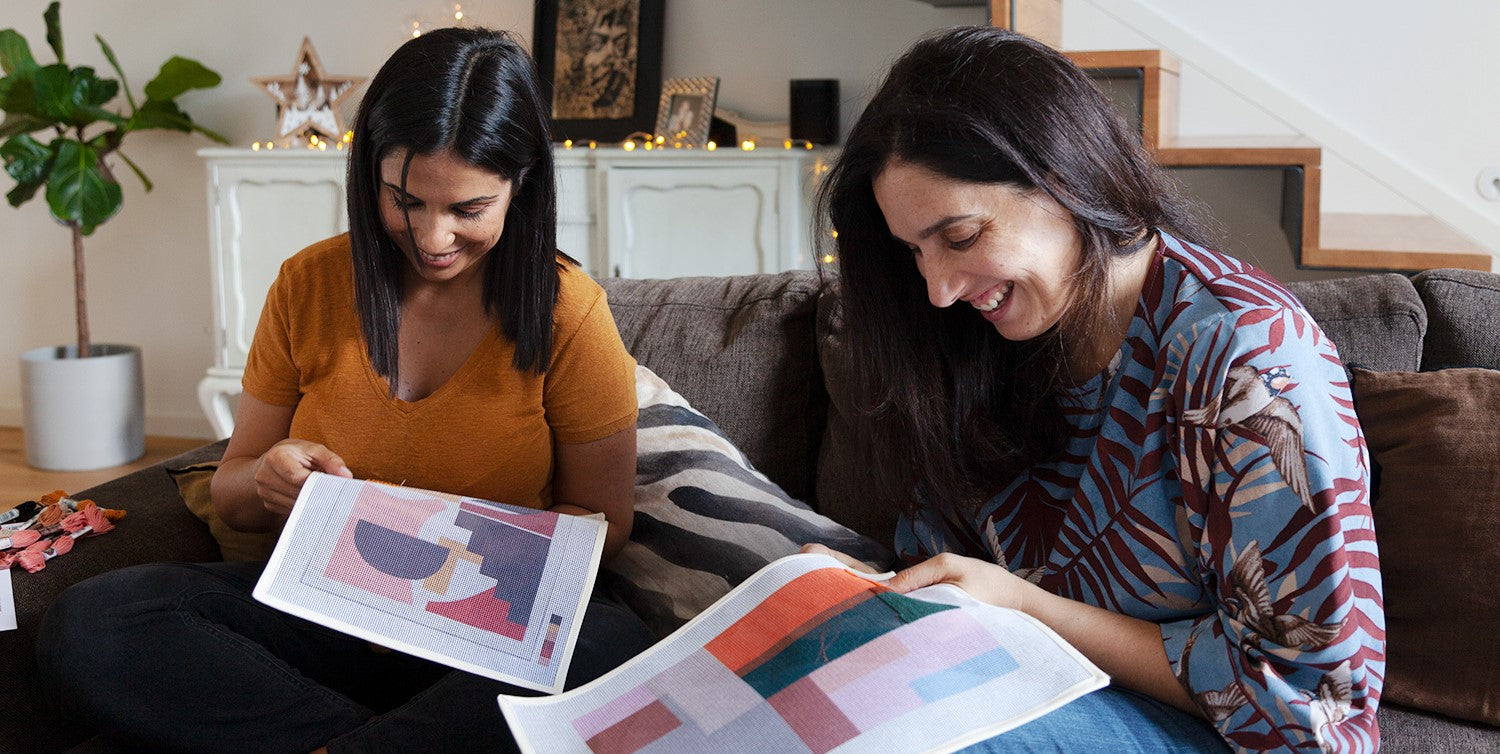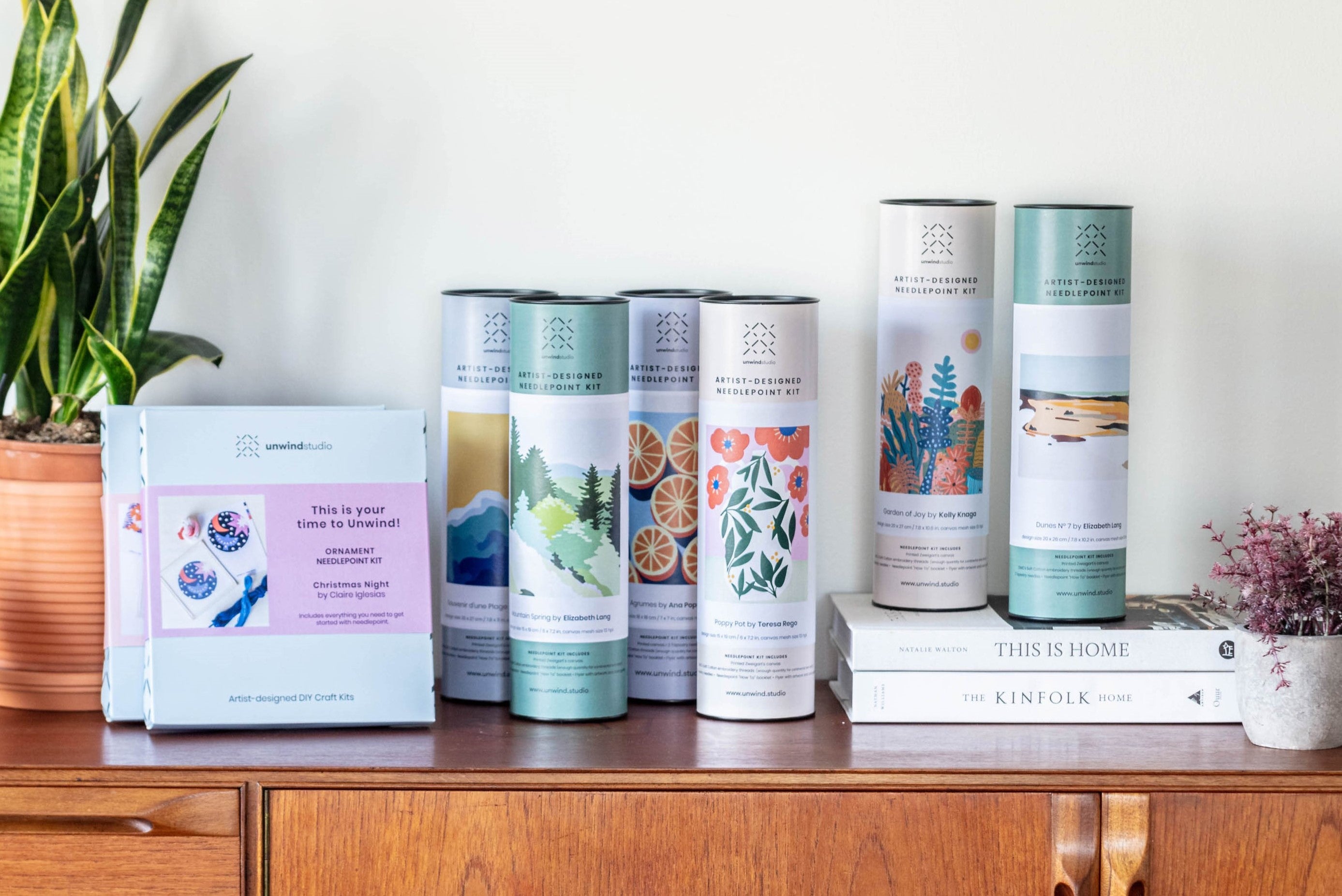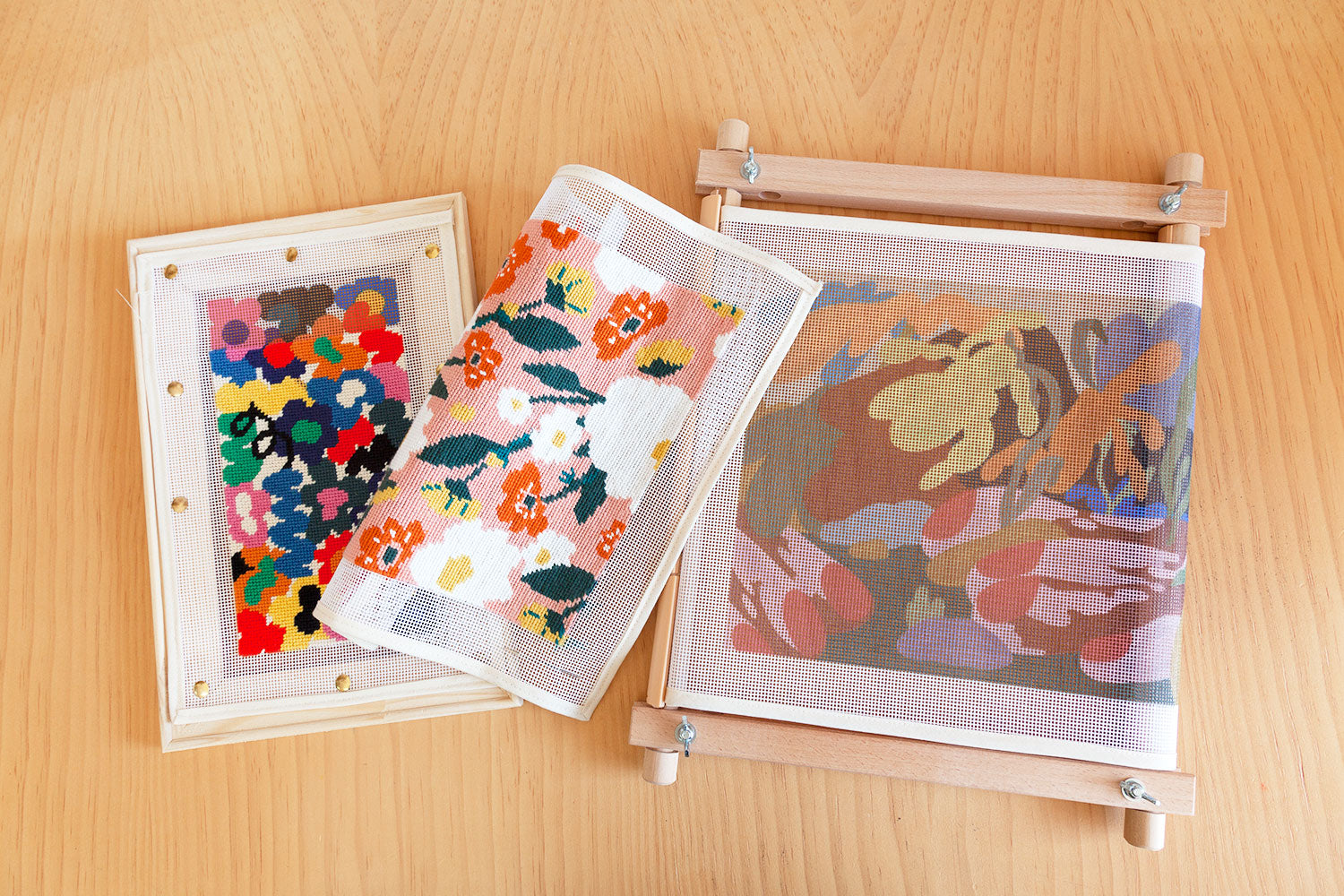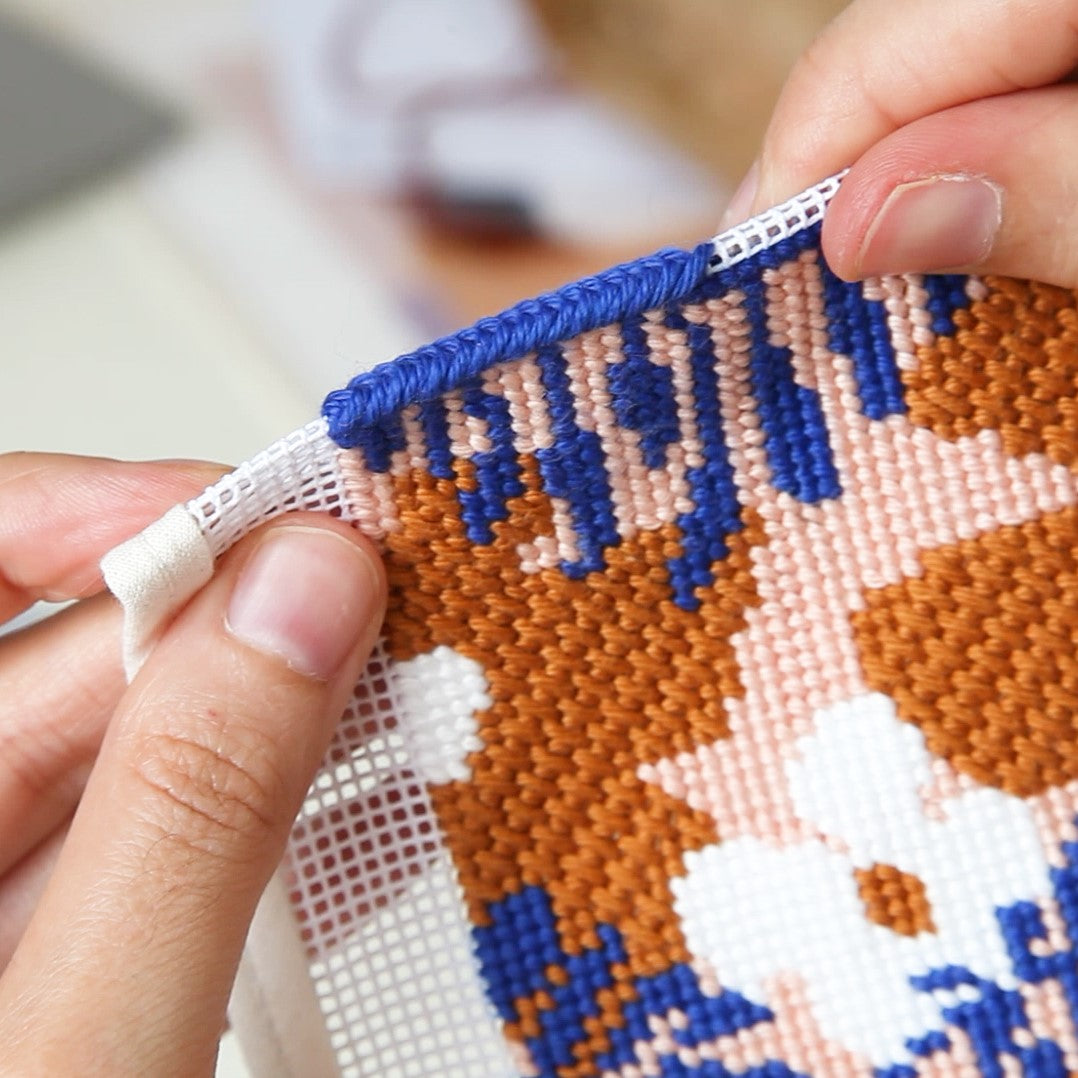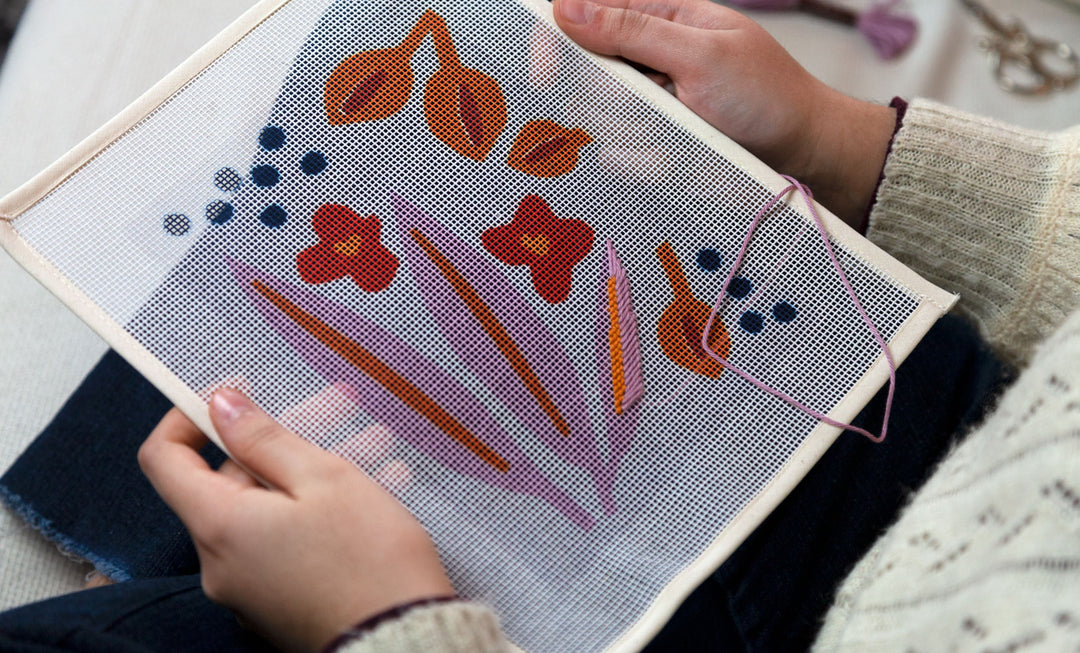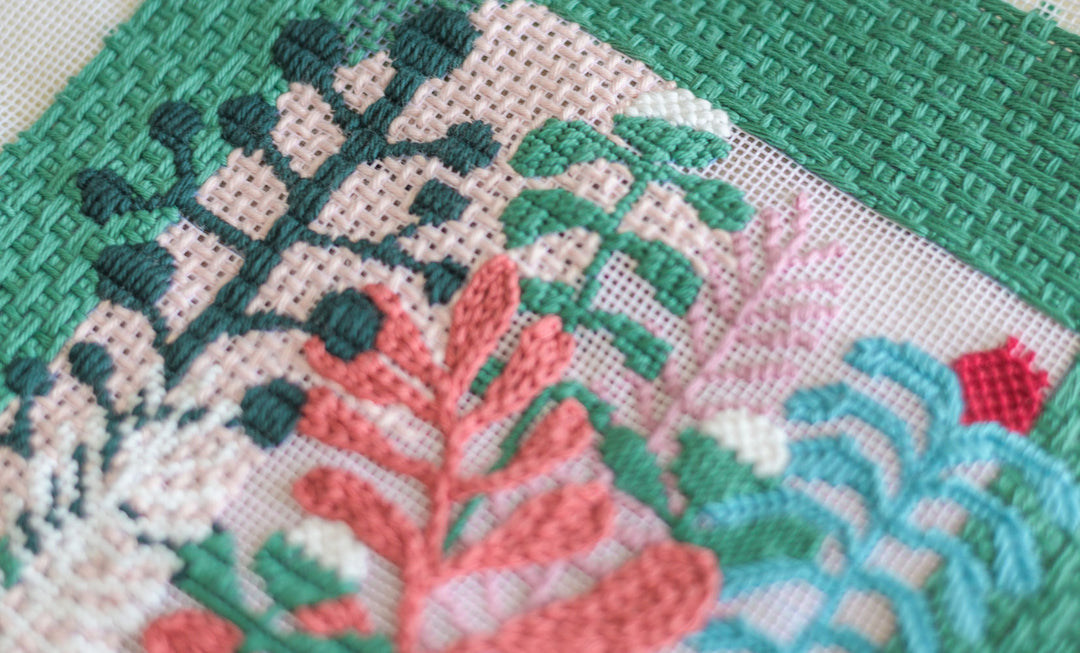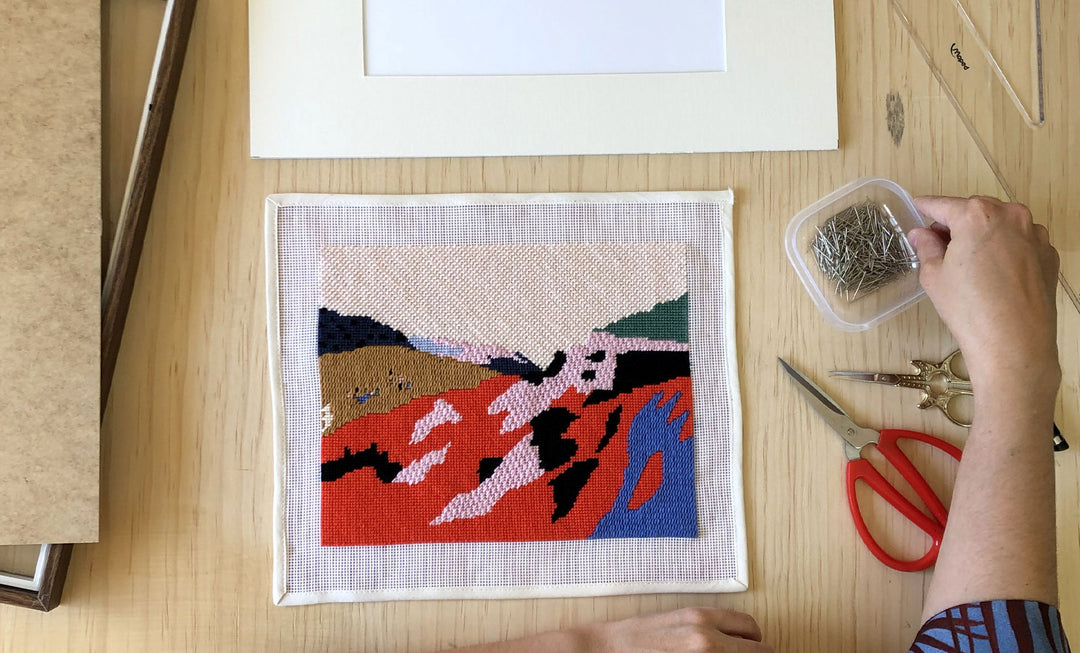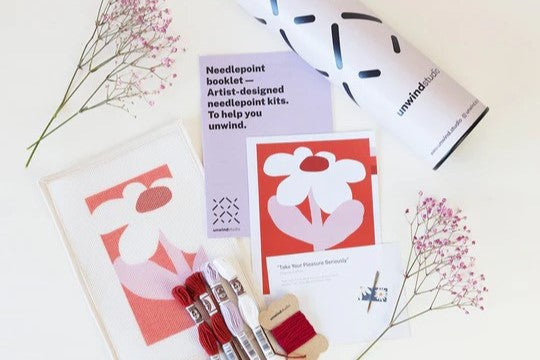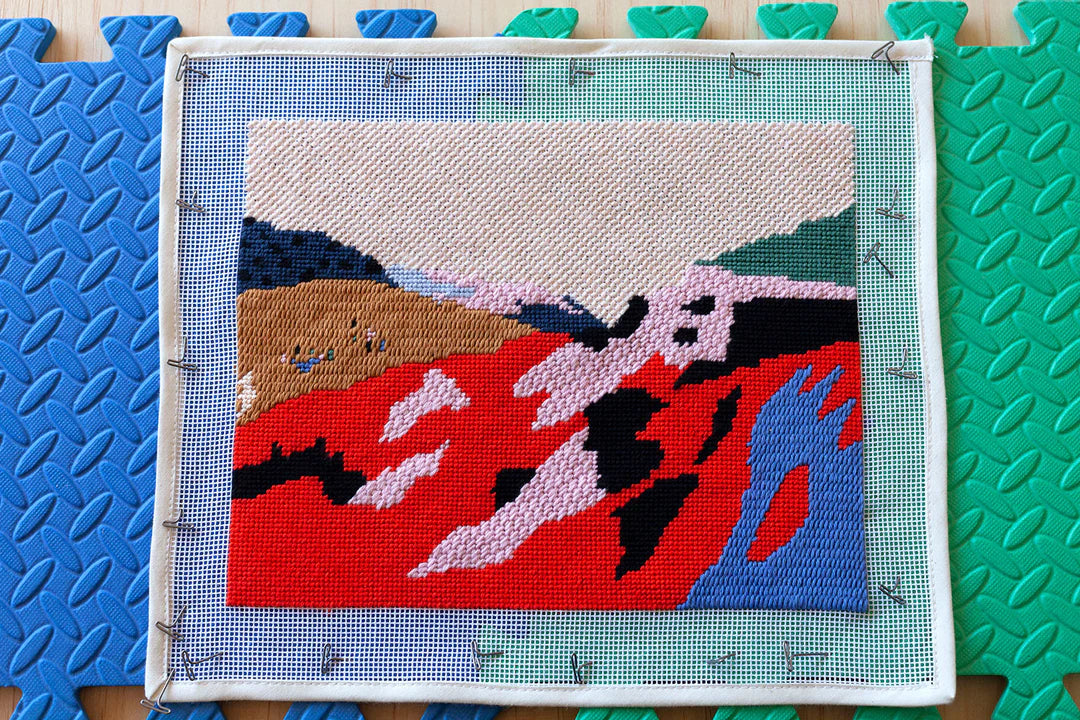Do you need a frame to do needlepoint?
We see this question come up a lot in the needlepoint community, and the answer is simple: you don't need to use a needlepoint frame, but you can if you want!
This comes down to each stitcher’s personal preference, and you can easily stitch your needlepoint without a frame, if you don't have one. In this blog post we’ll show you the differences between stitching with and without a frame, and the advantages of each technique.
Table of Contents
- Do you need a frame for needlepoint
- How to do needlepoint without frame
- How to use a needlepoint frame
- Types of needlepoint frames
- Needlepoint scroll vs stretcher bars
- Material and size
- Our recommendations
- Needlepoint Lap and Floor Stands
- Final considerations
How to do needlepoint without a frame
To stitch without a canvas you simply need to roll the canvas up until the part you are focusing on, and secure the canvas with the other hand. As you stitch, you adjust the position and direction of the canvas, to reach each area without any problems! Some people also like to secure the rolled canvas with some clips, to make it easier to hold without any tension in your hands (see the picture below).
Advantages of not using a frame:- Mobility - stitch your canvas everywhere;
- Easily store and transport your canvas;
- You can use "scooping" for a faster stitching.
Our "Contemporary Floral Pattern" canvas, stitched while rolling the canvas by hand.
This is our preferred method, as it allows for the best mobility while stitching. One of our priorities when doing needlepoint is that we can do it everywhere, and transport it easily from place to place. When you stitch without a frame you can easily store it and transport it, without having to dismount your work.
Another advantage of stitching without a frame is the ability to “scoop”, a technique that can be used with some stitches, like the Tent Stitch or Long Stitch. This way you can decrease the amount of back and forth, something that can be tiring when using a frame.

Our "Contemporary Floral Pattern" canvas, stitched while rolling the canvas by hand, using clips.
One aspect of stitched handheld is that there may be a bit of distortion in the canvas, something that is normal with some stitches. This can be easily fixed by applying blocking, once you finish stitching. Check out our needlepoint blocking tutorial, for some simple DIY instructions and tips!
How to use a needlepoint frame
Many people prefer to stitch using a frame, as it can be a way to keep the canvas stretched and to create an even tension.
Advantages:
- Keeps the canvas stretched;
- Creates even tension and reduces canvas distortion;
- Keeps both hands free;
Keeping the canvas stretched is the main advantage of using a frame. Some stitches are best executed when using a frame, like texture work or beading. Since the canvas is stretched, this reduces the amount of distortion, which leads to less or no blocking required.
Stitching with a frame can also be more comfortable for some people, as it keeps both hands free, and helps keep the canvas stable for anyone who struggles with mobility. It can also help with counted designs, as the holes are easier to see and count.
Types of needlepoint frames
Needlepoint frames come in various shapes and sizes, it is important to purchase the one you're most comfortable working with, as well as the right size for your project. Learn more about this on our blog post What size of stretcher bars/frames do you need for Needlepoint
Needlepoint Scroll vs Stretcher Bars
These are two different types of needlepoint frames, and the most commonly used.
The scroll frame works by attaching the canvas to two rotating arms that stretch and roll the canvas as you stitch it. This type of frame fits best medium and larger canvases.
Our "Sonia no Jardim" canvas in a Scroll Frame.
The stretcher frame/stretcher bars are made using wood (or plastic) bars that fit into each other, forming a rectangle. This frame has to fit the full size of the canvas, as the canvas has to be placed on top of it, and secured with pins to the wood. This type of frame is recommended for smaller projects, as it might be harder to reach the middle with larger frames.

Our "Jungley Flowers" frame in a Stretcher Frame.
Material and size
Needlepoint frames can be made with various materials, like wood or plastic, and are available in many different sizes, to accommodate the dimensions of your canvas.
Our recommendations
Check out our needlepoint frames with different sizes and materials, and find the one perfect for your project. Also, take a look at these suggestions if you are on the search for a needlepoint frame. These products are not sponsored.
For larger projects, we recommend this Elbesee Hand Rotating Frame, as you can easily roll the canvas using the scrolls.
For medium/small projects we recommend this Hilitand Plastic Clip Frame, that is available in various sizes, so you can choose the one that better fits your canvas.
Another option suited for smaller pieces, and less bulky that the last options are the F. A. Edmunds Mini Stretcher Bars, that are customizable for various sizes.
Needlepoint Lap and Floor Stands
When using a needlepoint frame, some people like to attach it to a lap or floor stand, so their hands are free from holding the canvas.
Final considerations
Whether you use a needlepoint frame or not, it ultimately comes down to your personal preference, since each way has advantages and disadvantages. Some people choose to prioritize mobility, others uniform tension, so it all comes down to you! If you have any questions, or want to tell us your method of choice send us a message on Instagram or email!
Happy stitching!


